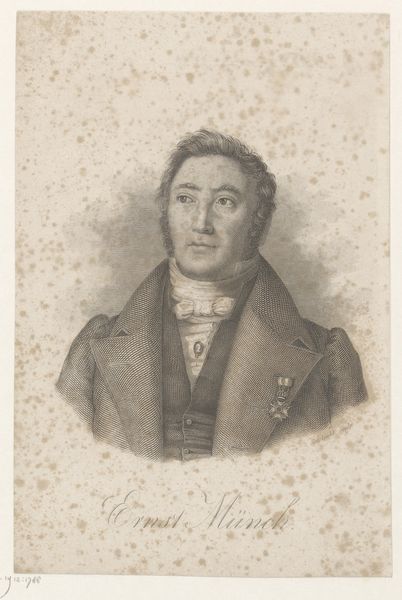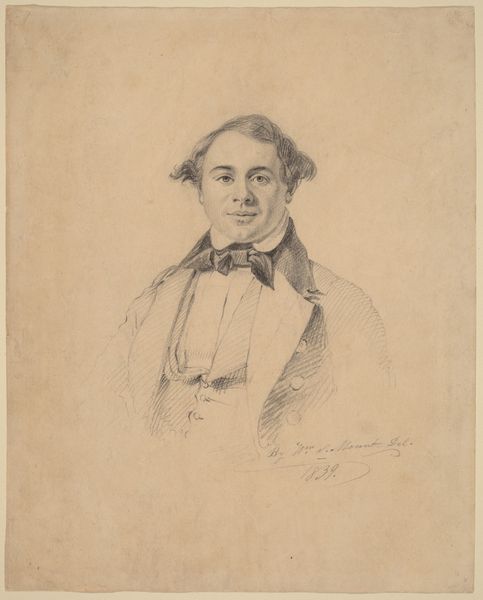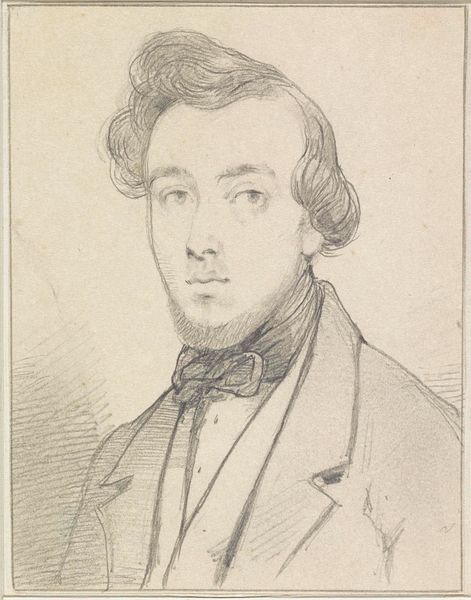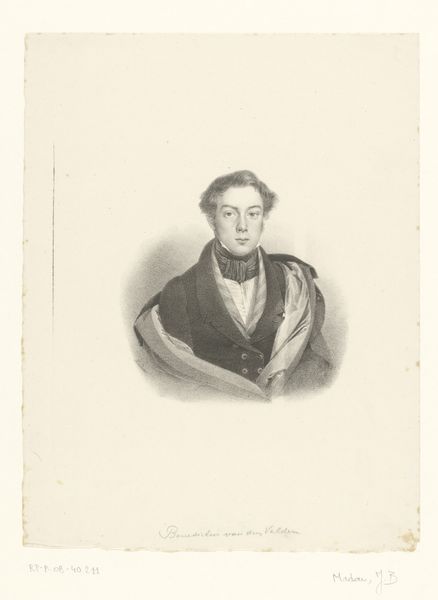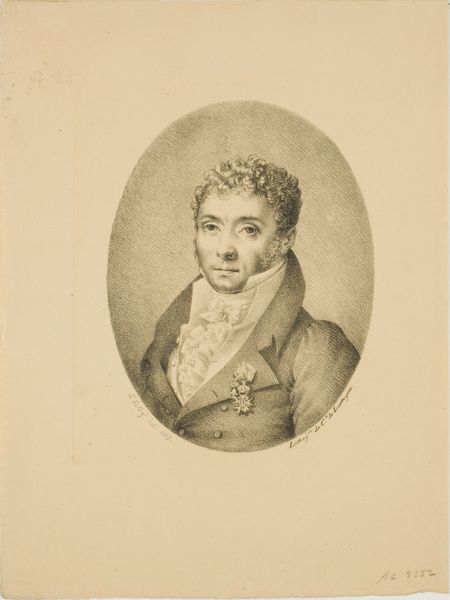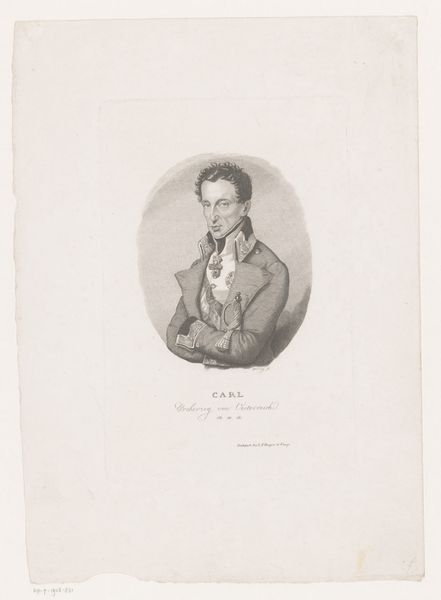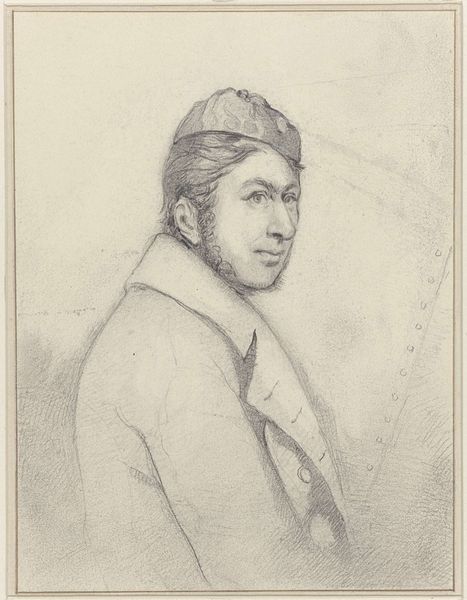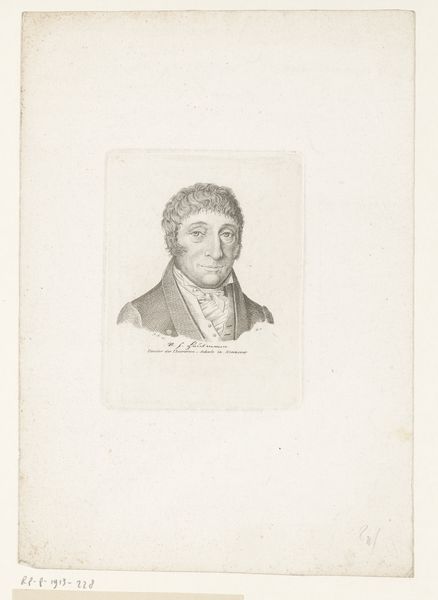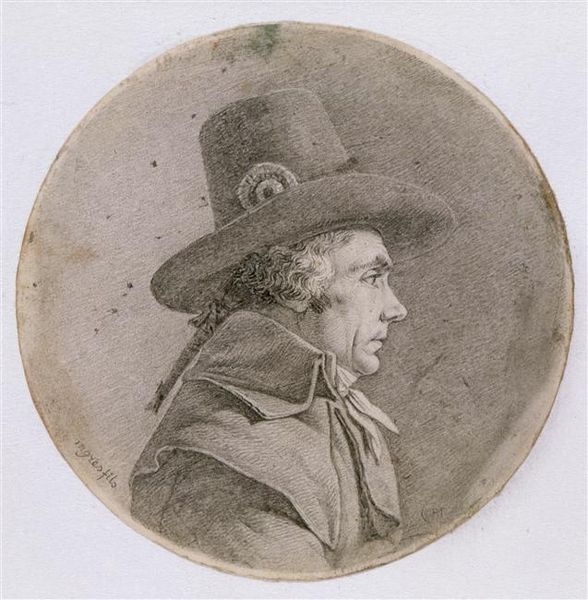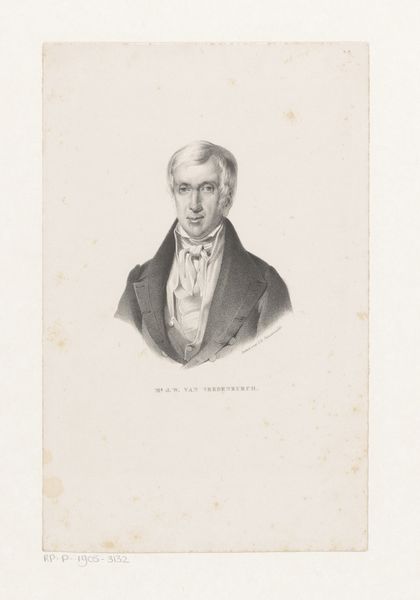
drawing, pencil
#
portrait
#
pencil drawn
#
drawing
#
pencil drawing
#
romanticism
#
pencil
#
portrait drawing
#
realism
Dimensions: height 188 mm, width 160 mm
Copyright: Rijks Museum: Open Domain
Curator: Ah, here's Petrus Franciscus Greive's "Portret van de schilder K. Karsen," dating from sometime between 1821 and 1872. It’s a pencil drawing. What's your immediate take? Editor: Stark! I find this monochromatic rendering both fascinating and haunting. The subject's gaze seems to hold a lifetime of stories. And that hat! Curator: The hat is great, isn't it? Adds a bit of quirky charm. Greive captures Karsen with an almost unsettling directness. It’s more than just likeness; it's a glimpse into his spirit, don't you think? Pencil on paper feels so... intimate. You can sense the artist’s hand, the pressure, the decisions made line by line. Editor: Absolutely. Considering the labor involved in obtaining even basic art supplies in the 19th century—pencils themselves being relatively precious objects, not disposable as we see them now—it begs the question of access. Was Karsen a patron of Greive, or were they on more equal footing, exchanging portraits like trading cards between artist peers? What type of graphite was used here? The grade of pencil makes a statement on its accessiblity and cost, a signifier that can determine the depth of the creative journey. Curator: A valid question on access. I'm struck by the subtle romanticism peeking through the realism, particularly around the eyes and mouth. It speaks to a period grappling with portraying external reality while acknowledging the complexities of inner emotion. Like trying to catch smoke in a jar! I'm also intrigued by the softness he achieves with just pencil. There is a quality of light that dances on Karsen’s features. Editor: The light and shadow also emphasize the material process, too: a study in contrast achieved through skillful layering of graphite. Notice, how this artistic labor and the pencil lead creates depth in both form and emotion, elevating this portrait above mere representation. Curator: It makes you wonder about their relationship too. What were they thinking, what was it like to sit there. The very paper stock holds its own mystery. You wonder at its journey. The work in itself is one tiny remnant. Editor: It becomes more profound considering it all started with that first, delicate pencil stroke on that simple paper sheet, and where that places it in history.
Comments
No comments
Be the first to comment and join the conversation on the ultimate creative platform.

